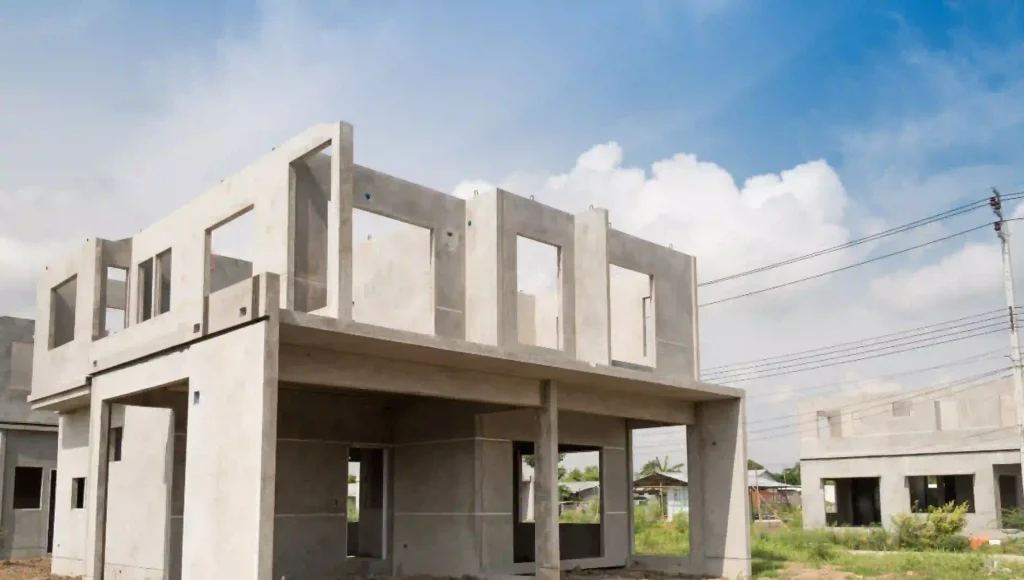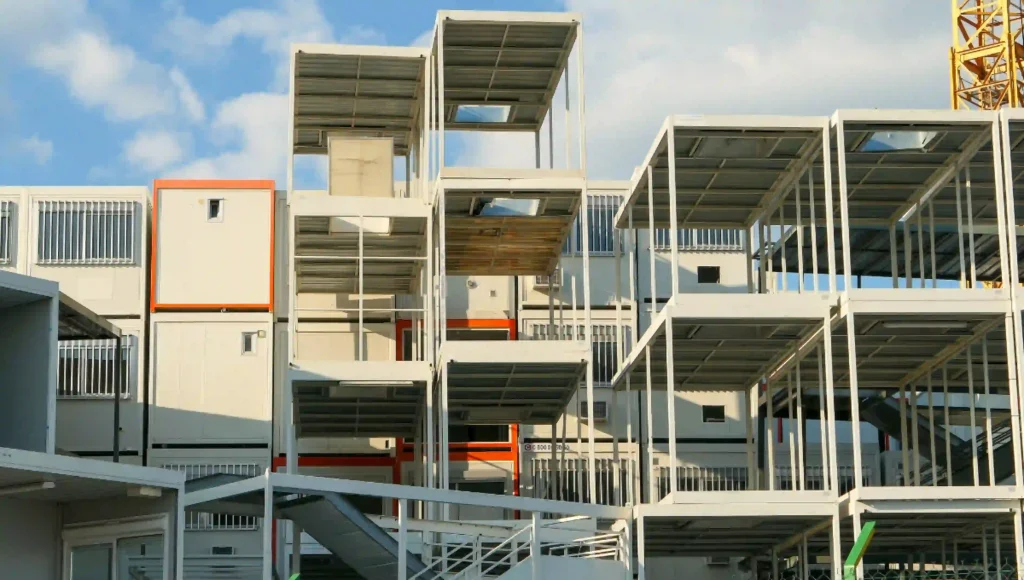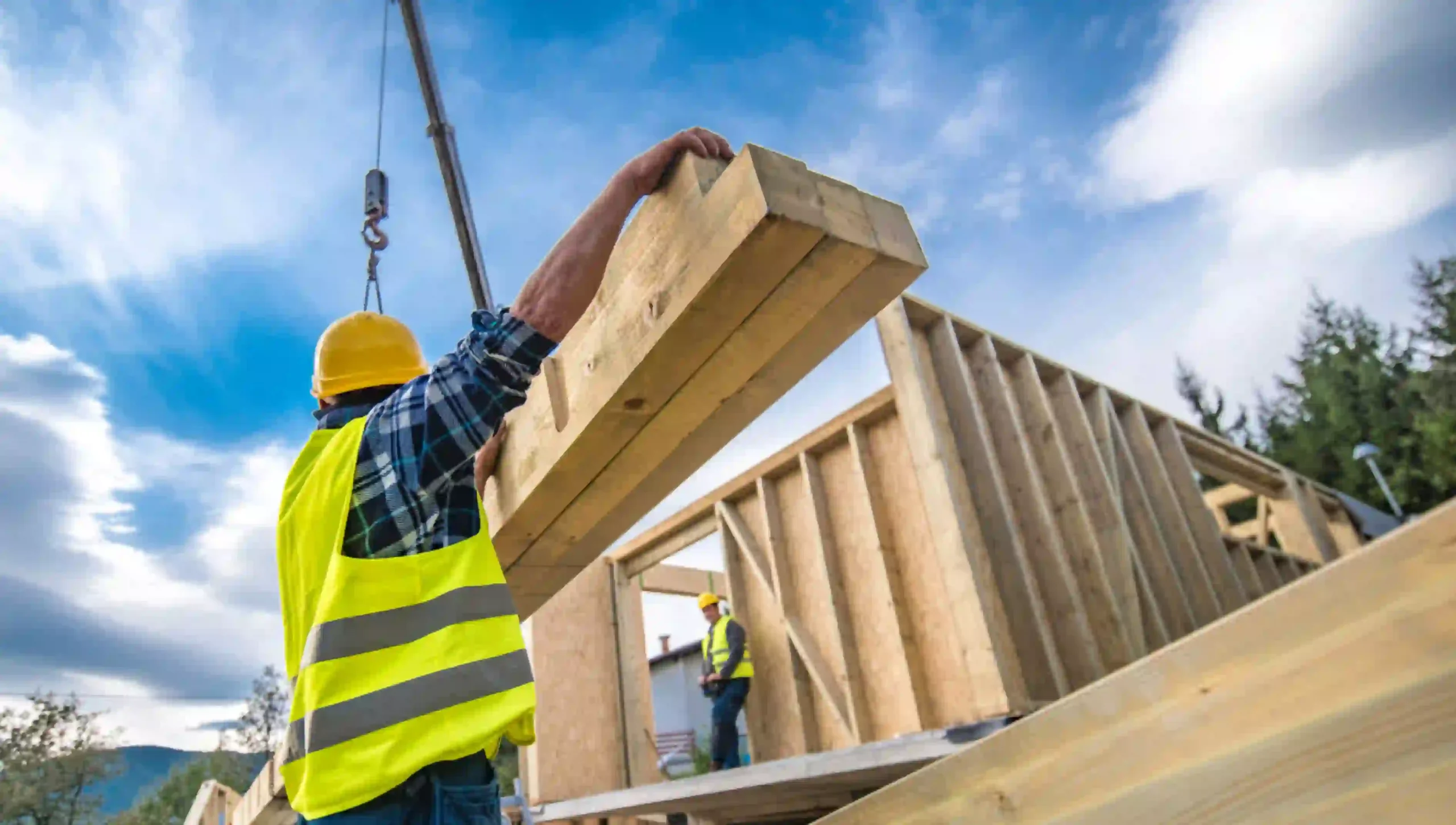In modern construction, the prefabrication is transformative. This method involves making parts of a structure in a factory. Then, they are moved to the site for quick assembly. This technique contrasts sharply with traditional construction. In traditional construction, materials are delivered to the site. The building is then erected from the ground up.
What is Prefabricated Construction?
Prefabricated construction is the process of creating building components off-site in a factory. These components range from simple wall panels to whole rooms or modular sections. They are then taken to the site for quick assembly. Building with prefabricated parts makes construction faster, better quality construction, and causes less waste. It’s a great choice for construction today.
Why is Prefabricated Construction Gaining Popularity?

The rising popularity of prefabricated construction can be attributed to several compelling factors:
- The construction can be much faster. We can make the parts in the factory while we prepare the construction site.
- When factories control production, it can cost less for workers and materials. Also, bad weather is less likely to cause delays during construction.
- Manufacturing in a controlled environment ensures higher quality standards and precision. This maintains consistent quality throughout the process.
- Prefabricated buildings use materials efficiently, generating less waste. They can also be more energy-efficient.
- Prefabrication reduces the need for skilled labor on-site. This is especially true in areas with labor shortages.
Types of Prefabricated Construction

Different construction methods are used for various needs and applications in prefabricated construction.
Modular Construction:
It involves making whole building sections, or modules, in a factory. The modules are then taken to the site. Building blocks come together to form a complete structure. This method caters only to residential buildings, hotels, schools, and hospitals. Each module comes with all the needed finishes. These include plumbing, electrical systems, and fixtures. They are ready for on-site connection and completion.
Panelized Construction:
Panelized construction focuses on making flat panels in a factory. The panels are then used for walls, floors, and roofs. Workers move these panels to the site. They put them together to make the building’s frame. This method allows for flexible design. It is good for homes and businesses. It is particularly helpful for custom designs and integrating building systems.
Pre-cut Construction:
Pre-cut construction involves cutting and preparing building materials in a factory. The materials are things like lumber or steel. The cutting uses precise measurements.
The pre-cut parts are then shipped to the site and assembled according to the plan. This method reduces waste. It ensures precise fits. It’s great for timber-framed homes and smaller structures.
Benefits of Prefabricated Construction
Prefabricated construction has many advantages. They go beyond just speed and cost savings:
- Prefabrication reduces waste. It often uses sustainable materials. This helps green construction.
- Enhanced Safety: Factory settings reduce risks. They are linked to on-site accidents and bad weather.
- Flexibility and scalability are key. You can easily make prefabricated systems larger. You can do this to fit different project sizes and complexities.
- Faster construction times mean less disruption. This is particularly true in urban areas.
- Factories make sure things are always the same and of good quality. They follow the rules for how things should be made.
Who Uses Prefabricated Buildings?
A diverse range of sectors use prefabricated buildings, including:
- Builders use prefab techniques for homes. Homeowners and developers use them as well. They focus on single-family homes, apartments, and vacation properties only.
- Businesses often use prefabricated structures for fast, cheap expansion. This is especially true in retail and hospitality,
- Schools and universities use modular buildings. They use them for classrooms, dorms, and offices.
- Hospitals and clinics enjoy the quick deployment of modular units. They are for patient care and medical facilities.
- Prefabricated buildings work well for warehouses and factories. You can expand them and make them last a long time.
- Governments and militaries use prefab construction. They People use it for barracks, offices, and temporary housing in emergencies.
Challenges of Prefabricated Construction
Despite its numerous benefits, prefabricated construction faces several challenges:
Limited Customization
One main criticism of prefab construction is the perceived lack of customization. We have made advancements. But, prefab designs are less flexible than traditional construction. They lack variety in architecture and bespoke features. Clients face a challenge when seeking one-of-a-kind or precisely tailored designs.
Transportation and Logistics
Moving large prefabricated parts from the factory to the construction site is hard. Issues, such as module size, weight limits, and distance to the site, can raise costs. They can also complicate delivery schedules. Additionally, handling and assembling large modules on-site requires specialized equipment and skilled labor.
Perceptions and Biases
Many people think that prefabricated buildings are not as durable as traditional buildings. We must aware people of the benefits of prefabrication. This will dispel misconceptions. These ideas can hinder use.
Conclusion
Prefabricated construction offers a promising alternative to traditional building methods. It is faster, cheaper, and makes higher-quality structures.
However, there are challenges. They include limited customization, transportation logistics, and public perceptions. But, ongoing progress and growing acceptance are addressing these issues.
The construction industry is changing. It is moving to efficient, sustainable, and versatile prefabricated methods. These methods are set to play a big role in shaping the future of buildings. The methods are attractive for many uses. They work for homes to large projects. Embracing this new approach can make the construction industry more efficient and sustainable.

